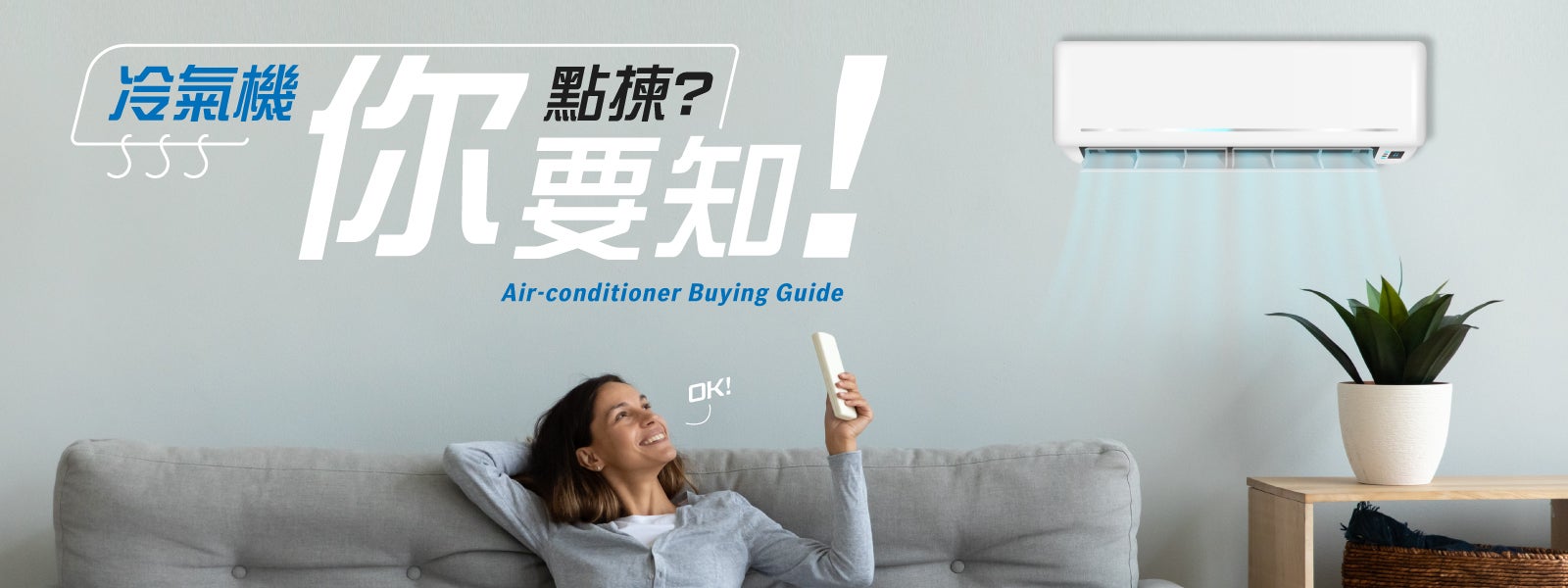Air Conditioner Buying Guide
Choose which delivery location serves you best, click Start Shopping
請選擇您的送貨地區及立即開始購物
Register now to enjoy Broadway member goodies
立即登記成為百老滙會員,即可享各項驚喜禮遇
The summer in Hong Kong is hot, humid and long. Air-conditioners and dehumidifiers are must-have items.
We shared the tips for selecting a dehumidifier before. This time we have prepared a very comprehensive air conditioner tips for everyone.
In addition to teaching you how to choose an air conditioner, of course there are tips on how to use, clean and maintain the air conditioner correctly.
In addition, using with circulation fan helps make the indoor temperature more balanced and reduce the power consumption of the air conditioner.
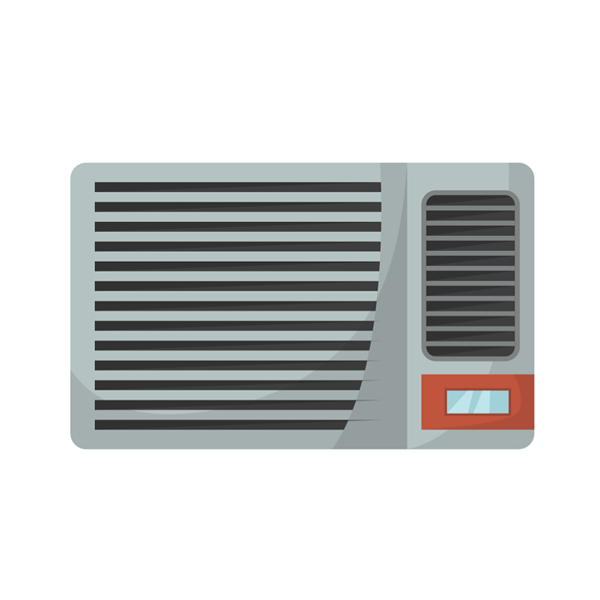

Window Air Conditioner
The refrigeration compressor and exhaust device of the window air conditioner are integrated. The compressor will make noise during operation. The air conditioner is installed on the window frame with a metal bracket. It is recommended to purchase a window type air conditioner with a rust-proof coating compressor to prevent the compressor.
✔ Lower price
✔ Easy installation
✘ Noisy during operation
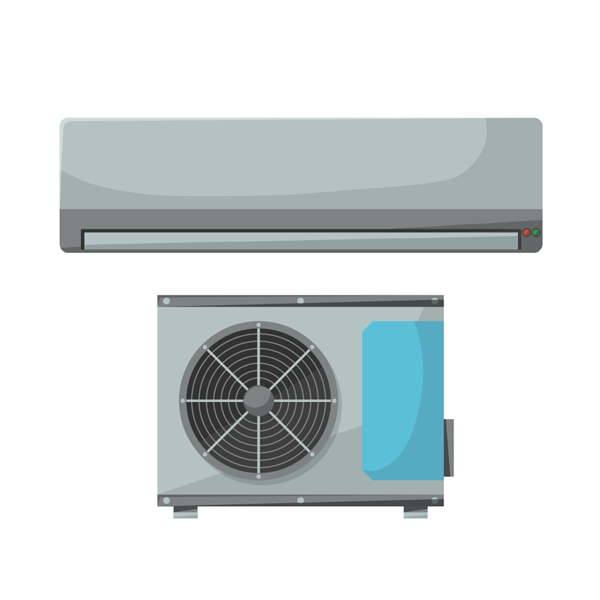

Wall-Mounted Split Air Conditioner
The split-type air conditioner is composed of an indoor unit and an outdoor unit. The outdoor unit is equipped with a compressor and a cooling condenser for cooling, while the indoor unit is only responsible for air supply, which is quieter in operation. However, due to the need to build a shed to install the outdoor unit, there is a certain installation cost. In addition, the split type air conditioner can support several indoor units with one outdoor unit.
✔ Quiet during operation
✘ Higher price
✘ Need to build a scaffold during installation, the cost is higher
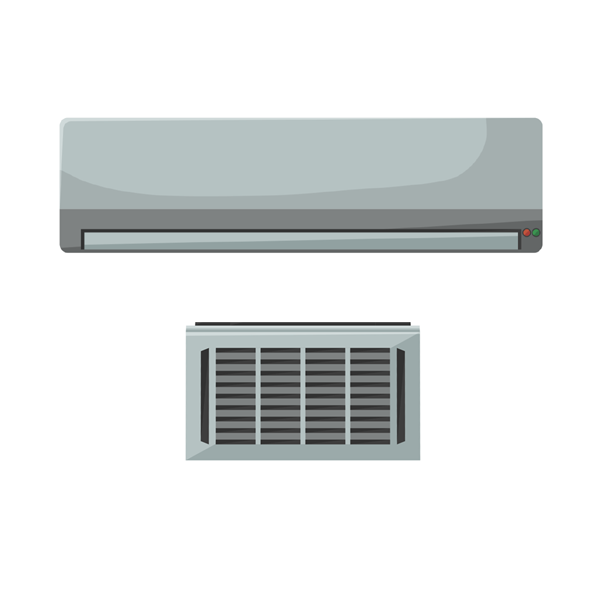

Window Split Air Conditioner
The exterior design of the indoor unit of the window split type air conditioner is not much different from that of the general split type air conditioner, but the outdoor unit is smaller in size and can be installed in most windows, making it easier to install. Part of the window split air conditioners in the shop are called "slim" split type.
✔ Quiet during operation
✔ Suitable for units with limited outdoor space
✔ Need not to build a scaffold during installation, the cost is relatively low
✘ Higher price
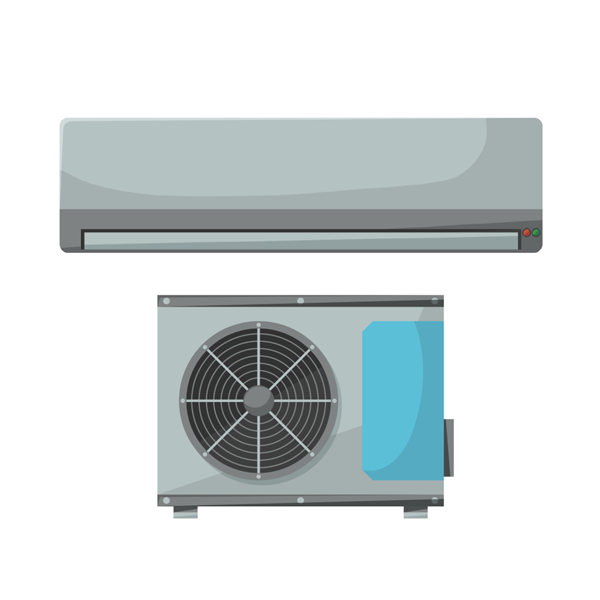

Cooling and Heating Split Air Conditioner
The appearance and installation method of heating and cooling air conditioners are not much different from split type air conditioners. However, the heating and cooling air conditioners can be operated in a reversible manner. The indoor heating can be cooled in summer and can be operated in reverse in winter. It brings outdoor heat into the room and blows out warm air. The heating and cooling air conditioners are more energy-efficient than heaters.
✔ Cooling and heating supply is suitable for use all year round
✔ Quiet during operation
✔ More energy efficient than stove
✘ Higher price
✘ Need to build a scaffold during installation, the cost is higher
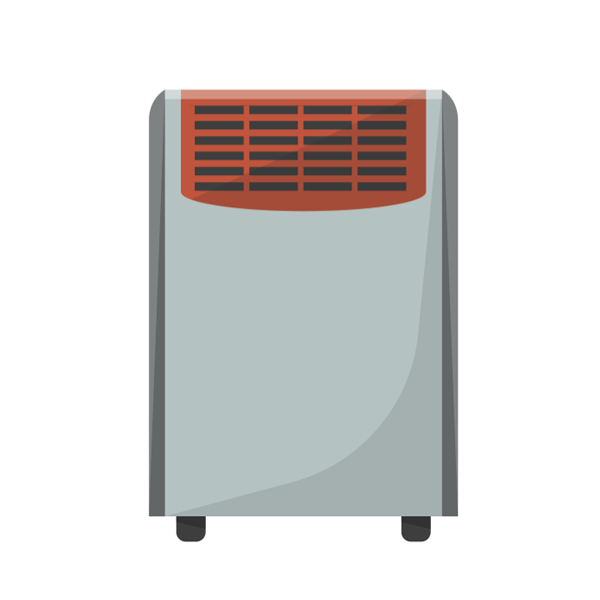

Portable Air Conditioner
The bottom of the mobile air conditioner is equipped with rollers for easy movement, but because it needs to be connected to the exhaust pipe, it is limited to be placed near the window and connected to the exhaust pipe to exhaust the hot air.
✔ No installation required, the air conditioner can be moved
✔ Low electric consumption
✘ Low cooling effect
✘ Large
✘ Space needed for the drainage pipe and the hot air level
✘ Noisy during operation
Smart Shopping Tips for Air Conditioners:
Horsepower of Air Conditioner
The greater the number of horses, the higher the cooling capacity, but the greater the power consumption. Users can refer to the area of the room and choose the appropriate number of air conditioners.
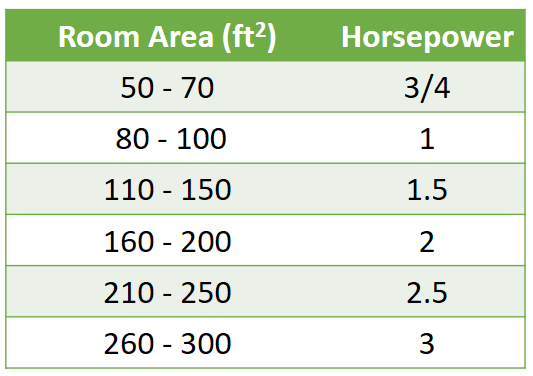

Cooling Capacity of Air Conditioner
The refrigeration unit of an air conditioner is usually kilowatts (kW) or British thermal units per hour (BTU/h). A higher value reflects the higher cooling capacity of the air conditioner. Users can refer to the room area and choose the appropriate cooling capacity of the air conditioner.
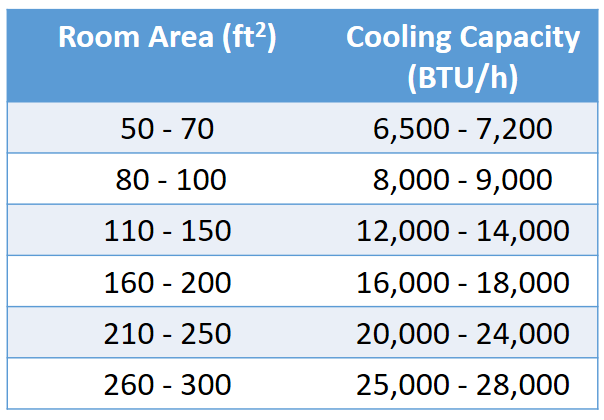

Fixed-frequency and Inverter Air Conditioner
The compressor of the fixed frequency air conditioner can only rotate at one speed when it is operating. When the air conditioner reduces the indoor temperature to the set level, the compressor will stop operating. Then when the room temperature rises, the compressor will restart to lower the room temperature to an appropriate level. Therefore, the fixed frequency air conditioner is constantly switched on and off according to the room temperature. The room temperature will be more unstable and consume a lot of power. Therefore, the price of the fixed frequency air conditioner is generally cheaper.
When the inverter air conditioner detects that the room temperature reaches a certain temperature, the air conditioner will automatically reduce the compressor speed and continue to operate, avoiding frequent switching of the compressor parts, while stably controlling the indoor temperature, so the inverter air conditioner is more efficient It can save energy and save up to 40% of electricity. Therefore, inverter air conditioners are more expensive.
Energy Label
The energy label for air-conditioners indicates the energy efficiency levels from the highest level 1 to the lowest level 5.
The window air conditioners with the "Level 1 Energy Label" save 11% of electricity than the "Level 3 Energy Label" and are more than the "Level 5 Energy Label" Save 25% more power.
The "Level 1 Energy Label" split air conditioner saves 36% of electricity compared to the "Level 3 Energy Label" and 61% more electricity than the "Level 5 Energy Label". In addition, the "cooling capacity" and "annual power consumption" indicated on the energy label are compared.
Air Conditioner Use and Maintenance Tips:
- When turning on the air conditioner, you need to close the doors and windows. At the same time, you can turn on the fan and draw the curtains to help lower the room temperature fast and save electricity.
- Using the swing function of the air-conditioner. Cool air is blown out from the air conditioner evenly. It helps reducing indoor temperature.
- Avoid any objects blocking the air inlet and outlet of the air conditioner.
- The air outlet of the air conditioner should not be directly blown to the ceiling or wall at close range. It helps reducing moisture and mold due to temperature change frequently.
- The air conditioner should be shut down and rested every 12 hours of operation to avoid bad effect of the lifespan.
- Restart the air conditioner at least 5 minutes after shutting it down to avoid reopening it for a short time.
- Wash the dust screen and wipe the air outlet every 2 weeks. Use shower water to clean the dirt on the dust screen and the air conditioner cover. Do not use a brush to clean it, because it will enlarge the mesh of the dust screen and affect the dust isolation function.
- The dust filter with anti-bacterial function does not need to be cleaned, but it is recommended to replace the dust filter with a new one in one to two years to ensure the best filtering effect.
- Use a suitable air conditioner cleaner regularly to clean the cooling metal pieces of the air conditioner to reduce the growth of bacteria.
Extended reading: When used with a circulation fan, the efficiency of air-conditioner can be greatly improved
The purpose of the circulation fan is different from ordinary fans. It is mainly to accelerate the circulation of indoor air. Therefore, it is necessary to adjust the placement of the circulation fan according to different seasons or uses to achieve cooling in summer and dehumidification in rainy seasons, thereby saving the power consumption of air conditioners. Let’s try the following 4 tips for placing circulating fans.
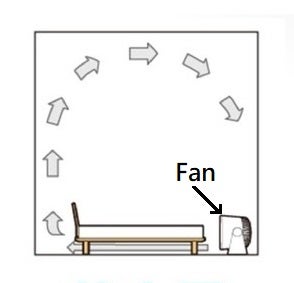

Use while sleeping
A circulation fan is placed parallel to the bed, allowing air to pass through the bottom of the bed to the ceiling. It will not blow directly to the human body to affect health, and at the same time reduce the indoor temperature.
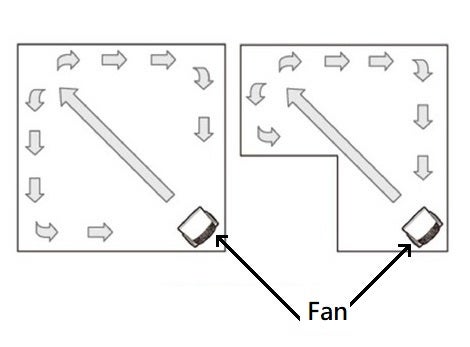

Enhanced indoor air circulation
Place the circulation fan at the longest straight distance in the room to enhance indoor air circulation. It helps to dissipate moisture, and make the environment more airy.
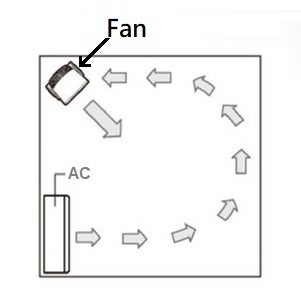

Auxiliary air conditioning use
When using an air conditioner, the cold air sinks down, causing uneven indoor temperatures and wasting electricity. Placing the circulation fan on the same side as the air conditioner, tilted at 45 degrees and facing diagonally, can enhance air circulation, transmit the cold air from the ground to all parts of the room, and improve the air conditioning efficiency.
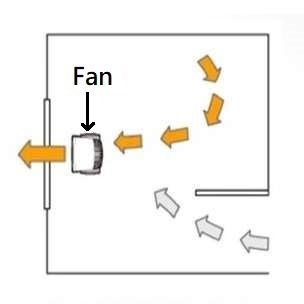

Dispel indoor heat
Place the circulation fan in front of the open window, facing the window, and use the negative pressure to send away the hot air in the room and introduce fresh air.
Circulation Fans
source:
Consumer Council (2020). Sixty and a half of the 3/4 HP window machines have a cooling capacity lower than claimed
Consumer Council (2019). 8 strategies for selecting air conditioners
Consumer Council (2019). Air-conditioner energy saving tips


